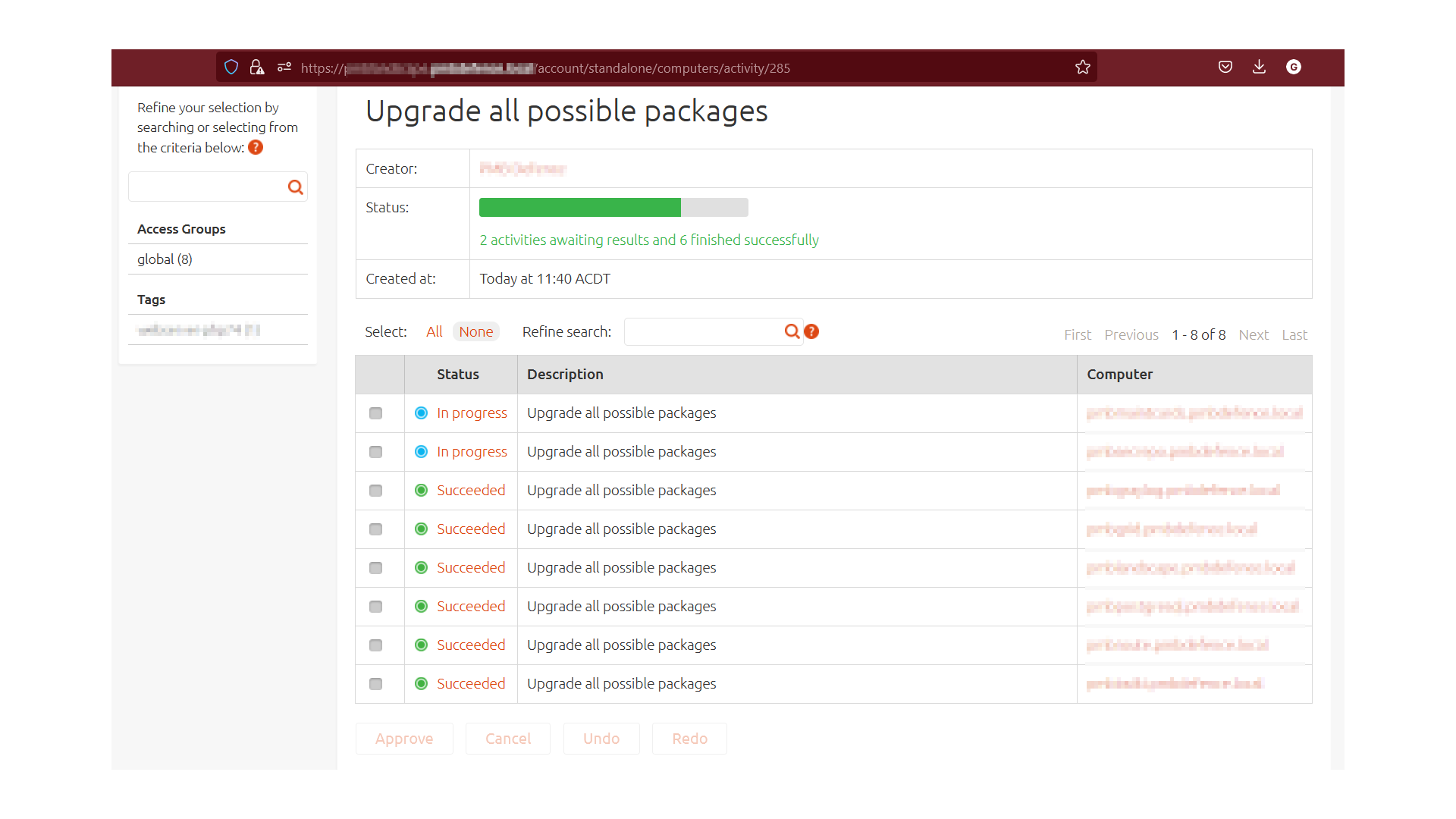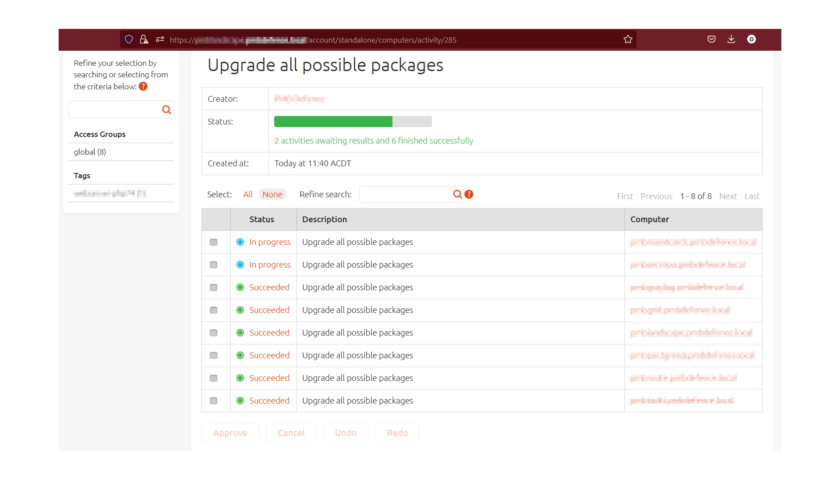In recent times, we’ve been experimenting with Landscape from Canonical. This article describes our experience. While I don’t claim to be an expert (or even a long time user) of Landscape, I have spent time to test and deploy it. While I hope I have missed a few key points, and therefore under-rated the system, I suspect the system simply lacks a little maturity. The other possibility is that Landscape is better than I found, but it isn’t as intuitive as I’d expect. And this article was written in late 2022.
Key facts I’ve discovered about Canonical Landscape:
- The client (landscape-client) will run “apt update” about 4 times per day.
- The client will run “apt upgrade” when the Landscape server profile “Upgrade profile” schedules it.
- Package upgrades will automatically apply provided there’s no further questions. Where there are further questions (ie, other packages need to be installed or something like that) the sysadmin has the responsibility of allowing the upgrade to proceed (still via Landscape).
- The client will never force a reboot of the client without first being instructed to do so from the Landscape server (by the sysadmin).
- The client can be requested to reboot either ASAP or at a specific time/date as dictated within the Landscape server (by the sysadmin).
Landscape is Canonical’s answer to Microsoft’s WSUS server. The match up isn’t exact. There’s several differences to note. Landscape doesn’t have the packages by default (although it can) to deliver to the client systems, it simply triggers the client systems to get and install the packages from wherever the system is configured to source them from. Conversely, WSUS does both. Landscape has the ability to manage some components of the client system such as users, group memberships and the ability to send arbitrary commands to one or more systems. To the best of my knowledge, WSUS doesn’t offer such features – and nor should it. There’s better ways to manage users in both environments.
The second differentiator above (user admin and commands) could do with some improvements. Each machine needs to be managed separately. So if you have 100 computers to add a single user to (or many users), you’re out of luck – you need to cycle through them one by one. But if you simply need to add a user to a newly spun-up virtual machine, the task is simple enough. But I’d argue that task is just one of the many tasks that should be managed in another way.
Landscape is suited to simply noticing and triggering updates. That’s it. Anything more is a bonus. And Canonical should make that rock solid.
The final point I want to discuss is the feedback from tasks. Landscape does a terrible job of informing the administrator of issues causing failures. There basically is nothing to describe the issue, and therefore the administrator needs to log into the client system to do the troubleshooting from scratch. It would be a significant improvement if Landscape could receive “issues” (irrespective of what and why) from the client systems giving the administrator something to work with before jumping into the client systems.
Having said all that, Landscape is worth it. If not for the status report (which could also be very much improved) but to allow an easy to to see and apply updates to client systems.
The following screenshot shows the process of an update that was manually triggered. It went smooth.

